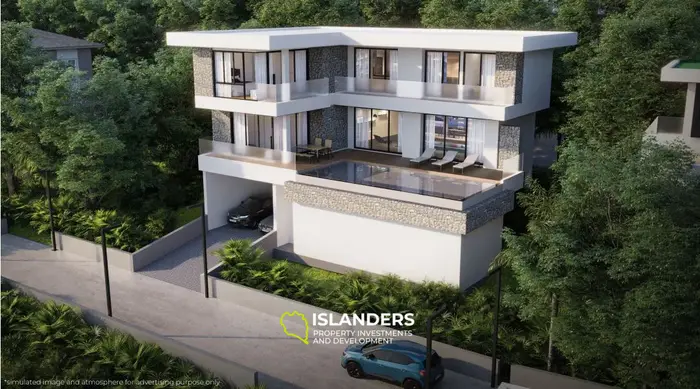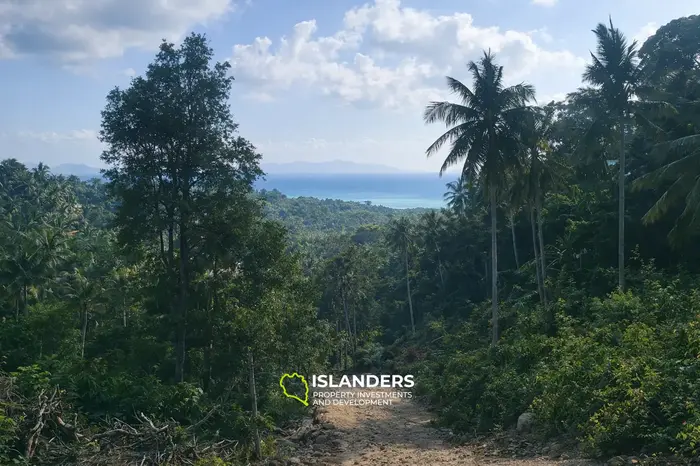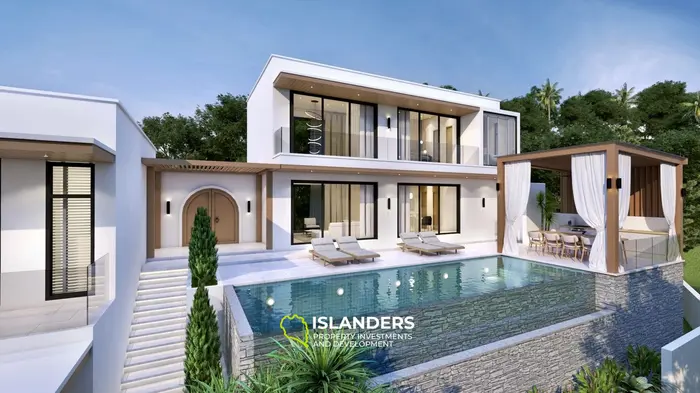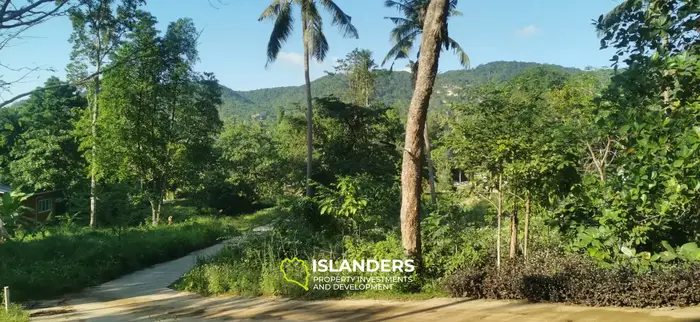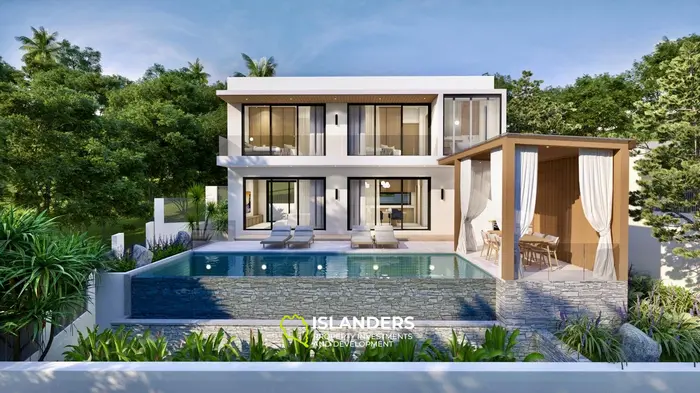Deep analytics: how investor strategies and expectations in villas, houses and (serviced) apartments have changed, what drives decisions today, and where the market is heading in 12–18 months, 3–5 years and 10 years. At the end — step-by-step checklists for owners, developers and operators.
Evolution of Investor Logic
From owning a “dream” — to a managed income-producing asset with transparent ROI and risk metrics.
1) Evolution of Investor Logic: from “Second Home” to Managed Yield Asset
Stage I. Lifestyle first (≈ pre-2008)
- A second home as a status symbol and “family nest.”
- Occasional rental via “friends” or 1–2 agents.
- ROI barely calculated: owning is more important than managing.
Stage II. Investors learn to calculate, but management is weak (2009–2013)
- Focus on costs, seasonality, downtime and liquidity.
- “Guaranteed yields” from developers/operators (often with caveats).
- OTAs/marketplaces open demand, but owners remain amateurs.
Stage III. Professionalization of short-term rental (2014–2019)
- Dynamic pricing, multichannel, SLAs/cleaning.
- Emergence of portfolio villa/aparthotel operators.
- Branded residences bring a premium to yield and liquidity.
Stage IV. Mid-stay and flexibility (2020–2022)
- Hybrid work, 7–30–90 night demand.
- “Home as office”: internet, silence, workspaces.
- Contactless service, flexible cancellations, sanitization protocols.
Stage V. Regulation, cost of capital, “green discount” (2023–2025)
- Short-term rental limits → shift to mid/long-stay and licensing.
- Energy/ESG directly affect NOI and insurability.
- Premium for “honest operations” with clear risk-sharing.
Conclusion: the investor has shifted from “dream” to managed cashflow. Key questions are: yield scenarios (P50/P80), cost of ownership (OPEX, insurance, energy), engineering resilience, operator quality (SLA, reputation, NPS).
2) What Shapes Investor Behavior Today
- Cost of capital and access to debt. Higher rates and stricter quality thresholds — mistakes cost more.
- Accommodation regulation. STR restrictions, mid-/long-stay becomes “green corridor.” Licenses/taxes/ownership forms matter.
- Climate & insurance. Premiums/deductibles rise; “insurability” affects cap rates.
- Energy & ESG. PV+batteries, water savings, materials — now P&L factors.
- Management technology. Channel strategy, RMS, CRM/retention, automation/IoT — standard.
- Product repackaging. Rate ladders, fences, packages, corporate demand.
3) Investor Segments and How to Sell to Them
A. Lifestyle Investor
Goal: 4–8 weeks personal use, comfort, status.
Keys: calendar blocks, owner-rate, storage, concierge, seamless rental of remaining weeks.
B. NOI-First Pragmatist
Goal: maximum net income with controlled risk.
Keys: mid-stay, strict SLAs, transparent deductions, reporting, reserves, insurance, engineering audit.
C. Portfolio Investor (3–10 units)
Goal: diversification of locations/operators, exit liquidity.
Keys: unified management agreement, standardized metrics, guest cross-sales, internal resale marketplace, buy-side network.
4) Future Horizons
4.1. 12–18 months: operational realism
- Flex ladder: nightly / weekly / monthly (different ADR and OPEX).
- Multichannel: 40–60% OTA, 20–40% direct, rest partners/corporate.
- Insurability & engineering: checklists for drainage/slopes/wind/electricity/reserves.
- Energy as a service: PV+battery, zone meters, billing for monthlies.
- Transparent KPIs: ADR/Occ/RevPAR, % direct, CAC/booking, LTV, NPS, TAT, OPEX/night, NOI margin.
4.2. 3–5 years: product & capital
- Mid-stay as the base: 1–3 month contracts, “home-as-office” ecosystems.
- Brand operators & collections: premium to occupancy and exit price.
- Club deals & fractional ownership: legally clean structuring.
- ESG → cost of debt: energy certificates and capex plans affect valuation.
- Transformation of “naked” STR: toward licensed flexible accommodation.
4.3. 10 years: wellbeing infrastructure & digital rights
- Live-anywhere families: resorts with good social infrastructure win.
- Standardized digital guest profile: personal rates/upsells across networks.
- Energy autonomy becomes norm: PV, batteries, grey water, smart grids.
- Digitization of ownership: institutional registries and fast settlements.
5) Economics & Metrics: What to Show and How to Calculate
Basic formulas
- RevPAR = ADR × Occupancy (or revenue / room-nights).
- NOI = Revenue − OPEX − capex reserves.
- Cash-on-Cash = Annual net cashflow / Equity.
- DSCR = NOI / Debt service.
Scenario approach
- P50: base demand/rates, no stress.
- P80: conservative demand, ↑insurance/utility costs, downtime.
- Investment/debt decisions → only if P80 acceptable.
Cost structure & benchmarks
- Cleaning, laundry, maintenance, utilities, internet/TV, commissions, consumables, management fee (base+performance), insurance, taxes/licenses.
- Reserves: 3–5% revenue for capex; separate reserve for deductibles/unexpected.
- Channel mix: growing direct increases margin (requires content/CRM/retention).
- Seasonality: at least 3 seasons + event peaks; LOS affects OPEX.
6) Product & Service: Packaging for Yield and for the Owner
Flex ladder
- Nightly: max ADR, ↑OPEX, high cancellation risk.
- Weekly: −10…−15% ADR, more stable occupancy, predictable cleaning.
- Monthly: −25…−35% ADR, low OPEX, minimal turnovers (rate fences required).
Rate-fences
- Different deposits/cleaning/utilities/cancellation policies — to avoid cannibalizing high-ADR short stays with long ones.
Mid-stay setup
- 2 workspaces, fast internet, blackout, laundry, full kitchen, storage, same-day repairs.
Packages
- Workation 28N, Family 14N, Wellness 10N, Sport Camp 21N, Retreat 7N — with defined inclusions (cleanings, transfers, services, insurance options).
7) Engineering, Insurability & Energy
Engineering checklist for resort property
- Drainage/stormwater, slopes, retaining structures (especially on hills).
- Wind loads, roofing/fasteners, sealing, leaffall and heavy rain.
- Electrical: grounding, RCDs, lightning protection, load distribution, backup.
- Water: reserve/pumps/filtration, grey water.
- Emergency protocols: storms/outages/flooding.
- Documentation: inspections, test acts, defect logs.
Insurance
- Policies/deductibles/exclusions, loss history vs engineering quality.
- 10-year stress test: premium/deductible growth, catastrophic events.
Energy & green capex
- PV+Battery with LCOE and payback modeling.
- Zone meters (HVAC/lights/outlets), billing for long stays.
- Materials & thermal engineering (shading/screens/glazing) → comfort + utilities.
8) Operations & Management Structure
KPI Dashboard (monthly/quarterly to investor)
- Commercial: Occ, ADR, RevPAR, % direct, CAC/booking, LTV, repeat share.
- Service: SLA < 5 min, TAT < 2h, NPS/ratings, incidents/100 bookings.
- Finance: NOI margin, OPEX/night, reserves, premiums/deductibles, downtime (days/year).
- Risks: licenses/regulations, insurability, engineering red flags.
Management agreement (best practice)
- Moderate base-fee + performance fee from NOI.
- Clear deductions, supporting docs, payment schedule.
- SLAs/penalties, audit rights, channel & pricing transparency.
Team & partners
- Operator (front/back, cleaning, maintenance, revenue).
- Contractors (electrical, plumbing, roofing, landscaping).
- Insurance broker, legal support, rental tax consultant.
9) Regulation & Deal Structuring
- Ownership rights: freehold/leasehold/condo quotas, foreigner limits.
- Rental licensing: STR licenses, guest registration, taxes/fees.
- Taxes & compliance: PIT/corporate taxes, VAT/CIT, DTTs.
- Structures: SPV for asset/portfolio, shareholder agreements, buy-sell, options.
- Exit: internal marketplace, buy-side network, operator buyback (if applicable).
10) Distribution & Marketing Strategies
- Channel mix: OTA (volume/visibility) + direct (margin/database) + local partners (events/weddings/sport).
- Content & trust: standardized photos/videos, floorplans, checklists, live ratings, “green dossier” (energy/insurance/engineering).
- CRM & loyalty: referrals, club tariffs, retargeting on peak dates.
- Revenue management: seasons/events, LOS rules, minimum nights, arrival/departure logic, rate fences.
11) Risks & Their Management
- Market: demand/seasonality/competition/macro → rate/Occ scenarios, location/channel diversification.
- Regulatory: STR rules/visas/taxes → regulatory map & alternative models.
- Engineering/climate: slopes/wind/rain → audits, prevention, reserves, insurance, protocols.
- Operational: staff/service/safety → SOPs, deposits/insurance, smart locks/access control.
- Financial: rates/refinancing/liquidity → debt structures, covenants, refi plan, buy-side network.
12) Step-by-Step Checklists
A. Before buying/investing
- Regulatory map (ownership/lease/taxes/licenses).
- Engineering audit (drainage, slope, wind, electricity, water).
- Insurability (quotes, deductibles, exclusions).
- Financial model with P50/P80, reserves, stress tests.
- Channel strategy & direct marketing assessment.
- Green capex plan & LCOE modeling (if PV/batteries).
B. Product development
- Rate ladder (nightly/weekly/monthly) & rate-fences.
- Mid-stay setup (workspaces, laundry, kitchen, etc.).
- Packages (Workation/Family/Wellness/Retreat/Sport).
- Content standards, property guidebook, guest manual.
C. Operating model
- Management agreement: base + performance from NOI, transparent deductions, SLAs/penalties.
- KPI dashboard: commercial/service/finance/risks, scheduled reporting.
- Reserves: 3–5% revenue for capex, deductible fund.
- Inspection/prevention plans, emergency protocols.
D. Sales & distribution
- Channel mix with target shares, content calendar, A/B tests.
- CRM funnel, retargeting, loyalty club.
- Local event partnerships; corporate rates.
- Internal resale marketplace (if portfolio model).
13) Where Everything Is Going — in One Paragraph
Resort residential real estate is moving toward a professional, insurable, energy-efficient operating model with mid-stay as the core format, brand operators/collections as the source of premium to occupancy and exit price, and fair risk-sharing between owner and operator (moderate base-fee + NOI-based performance, transparent deductions, KPIs and SLAs). Regulation is pushing “naked” short-term rental toward licensed flexible accommodation, while energy/engineering/insurance shift from “presentation slides” to the core of asset valuation and cost of capital.
FAQ
How is mid-stay different from short-term and long-term?
Mid-stay = 1–3 month contracts: more stable occupancy and lower OPEX than short-term, while keeping flexibility and premium rates vs long-term.
What KPIs should be shown to the investor monthly?
Occ, ADR, RevPAR, direct share, CAC/booking, LTV, NPS/ratings, TAT, OPEX/night, NOI margin, downtime (days/year), licenses/risks.
How to use P50/P80 in practice?
Model base (P50) and conservative (P80) demand/rates/costs; make decisions only if P80 is still acceptable for debt and target returns.
Which engineering risks hit capitalization the hardest?
Slopes/drainage, wind loads, electrical safety, water/electricity backups, lightning protection. These affect downtime, insurability and NOI.
How to avoid cannibalizing high-ADR short-stay with monthly rates?
Implement rate-fences: deposits, cleaning, utility metering, cancellation rules, minimum nights — so segments do not cannibalize each other.
More to read
Need help with modeling or operations?
Have questions? Write to us — we’ll help. Contact the team


